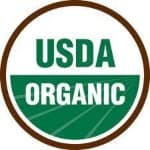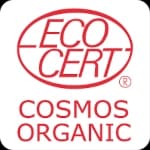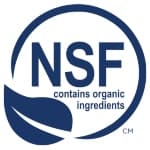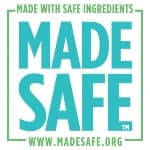How to Avoid Toxic Cosmetics in Beauty Products
Between the COVID-19 pandemic and the recent, worrisome signs of climate change, many consumers are increasingly focused on purchasing products that are both good for our health and good for the planet.
Toxic substances found in hair, skin, or nail care products include such ingredients as asbestos, formaldehyde, and coal tar, and they frequently appear in items you use every day. Meanwhile, the regulation of ingredients used in the cosmetics industry is complex and inconsistent, so consumers are often left with nothing more than faith in honest labeling to guide their purchases.
This page provides valuable information about what ingredients or formulations you should avoid and why, as well as tips for buying cosmetic products that are cleaner and healthier for your body and the Earth.
Why Does “Clean” Beauty Matter?
Some prevalent toxic ingredients have been linked to a whole host of health problems, from skin irritation and endocrine disruptions to allergic reactions, reproductive troubles, cancer, brain toxicity, thyroid disease, and more—not to mention the dangers they potentially pose to the environment.
When you consider that these chemicals often appear in products we put on our skin, near our eyes, or on our lips, it becomes painfully clear that we could be ingesting several pounds of these toxins throughout our lifetimes.
In 2017, a research study pointed to 5,144 health-related complaints lodged with the U.S. Food and Drug Administration (FDA) over 12 years for cosmetic and personal care products, with numbers increasing each year throughout the study. According to the FDA, a cosmetic is “a product (excluding pure soap) intended to be applied to the human body for cleansing, beautifying, promoting attractiveness, or altering the appearance.” This means that everything from your shampoo and face cleanser to your moisturizer, hair spray, and mascara count as cosmetics.
The best course of action to prevent poor health outcomes due to toxic ingredients is to become savvy about what ingredients to avoid and how to spot them in various products and support companies that utilize safe, natural, healthy ingredients.
The Dirty Dozen Toxic Cosmetic Ingredients
You’ve probably heard the term “Dirty Dozen” in the context of foods or food ingredients to avoid for the sake of your health. But what about the ingredients to avoid in your cosmetics? The below list details the 12 cosmetic chemicals to avoid, as well as tips for how to spot them and what alternatives to look for instead:
What are they?
Butylated hydroxyanisole (BHA) and butylated hydroxytoluene (BHT) are synthetic antioxidant preservatives.
How dangerous are they?
They can cause allergic reactions on the skin, are carcinogenic, and can disrupt hormone function, induce liver, thyroid, and kidney problems in high doses, and create adverse reproductive effects.
What products are they generally found in?
Lipsticks and moisturizers, as well as other cosmetics
Alternative ingredients that are better:
Vitamin E
What are they?
Coal tar dyes are artificial coloring agents produced by combining petroleum distillates with hydrocarbons. They also may be called P-phenylenediamine, or they may be listed as “CI” followed by a number.
How dangerous are they?
They are carcinogenic and contain heavy metals, which can be toxic to the brain.
What products are they generally found in?
Hair dyes, particularly dark dyes, as well as shampoos, deodorants, lipsticks, or skin care products to treat dandruff, eczema, psoriasis, or head lice
Alternative ingredients that are better:
Mineral or botanical pigments and compounds, or organic, nontoxic hair dyes
What are they?
Diethanolamine (DEA) and DEA compounds are emulsifiers used to make cosmetic products foamy or creamy. They act as pH adjusters to control other ingredients’ acidity levels.
How dangerous are they?
They can cause eye or skin irritation or, in extreme cases, liver, skin, or thyroid cancers.
What products are they generally found in?
Soaps, cleansers, shaving creams, foundation makeup, and moisturizers.
Alternative ingredients that are better:
Natural emulsifiers such as beeswax, vegetable wax, or lecithin from plant sources
What are they?
These chemicals are plasticizers often used in nail products to help them adhere to surfaces and remain flexible. Additionally, they add fragrance.
How dangerous are they?
They are carcinogenic and can cause endocrine, reproductive, and fetal development problems. Phthalates are often not on ingredient labels because of a loophole that allows fragrance recipes to be held as trade secrets.
What products are they generally found in?
Nail polishes, hair sprays, lipsticks, perfumes
Alternative ingredients that are better:
Any product that lists “fragrance” may contain phthalates; seek out fragrance sources such as “natural sources” or “from essential oils.”
What are they?
Formaldehyde products function as preservatives. Though formaldehyde occurs naturally at low levels, it can off-gas from certain other chemicals.
How dangerous are they?
It’s a known carcinogen and neurotoxin that can be absorbed into the skin or inhaled when heated.
What products are they generally found in?
Hair-straightening products, hair dye, nail polish, deodorant, and shampoo
Alternative ingredients that are better:
Natural preservatives such as vitamin E, essential oils like grapefruit or tea tree, grapefruit seed extract, or antioxidants
What are they?
The David Suzuki Foundation says that parabens are the most widely used preservative in the cosmetics industry. But because they are also used as fragrances, which are considered trade secrets, manufacturers don’t need to reveal them in ingredient lists.
How dangerous are they?
They can interfere with hormone or reproductive functions and react with UVB to cause accelerated skin aging.
What products are they generally found in?
Water-based products such as hair and skin care products, body washes, and sunscreens
Alternative ingredients that are better:
Vitamin E, essential oils such as grapefruit and tea tree, grapefruit seed extract, or antioxidants
What are they?
It may sound like a fancy, elegant French perfume, but don’t be fooled—“parfum” usually refers to a mixture of dozens of chemicals used for fragrance, which don’t have to be labeled under the trade secret loophole for fragrances.
How dangerous are they?
They can cause migraines, asthma symptoms, allergies, skin irritation, runny eyes and noses, and in some cases, even cancer.
What products are they generally found in?
Anything scented, from perfumes and colognes to deodorants or cleaning products
Alternative ingredients that are better:
Essential oils or other naturally sourced fragrances
What are they?
Polyethylene glycols, or PEGs, are petroleum-based compounds used to thicken or soften products by helping them to retain moisture.
How dangerous are they?
They are often contaminated with ethylene oxide and 2,4-dioxane—both human carcinogens—and easily absorbed through the skin. They can cause skin irritation, cancer, nervous system disorders, or human development problems.
What products are they generally found in?
Skin, hair, and body care products; makeup; baby care products
Alternative ingredients that are better:
Aloe vera, honey, or hyaluronic acid
What is it?
Many of us grew up using petroleum jelly, or petrolatum, as a barrier to lock in moisture in the skin. It functions as an emollient or lubricant.
How dangerous is it?
It often contains carcinogenic impurities, as well as causes acne and skin irritation.
What products is it generally found in?
Skin care products, lip balm, makeup
Alternative ingredients that are better:
Cocoa, shea, and mango butters
What are they?
As their name suggests, siloxanes are derived from silicone to soften, smooth, and moisturize hair and skin. They also may be used in medical implants. Look for ingredients with “siloxane” as part of the word, such as cyclotetrasiloxane.
How dangerous are they?
They are endocrine disruptors and may be linked to tumors, reproductive or immune system problems, or nervous system concerns.
What products are they generally found in?
Skin care products, moisturizers, facial treatments, deodorant creams, hair products
Alternative ingredients that are better:
Silicone-free products; paraffin oils, vegetable oils, and mineral oils
What are they?
Sometimes written as SLAS, this ingredient is a surfactant, or wetting agent, that adds bubbling or foaming properties to cosmetic products.
How dangerous are they?
They may contain the carcinogens ethylene oxide and 1,4-dioxane; surfactants strip natural oils from the skin and may cause skin irritation, allergic reactions, or dryness.
What products are they generally found in?
Shampoo, facial cleansers, body wash, bubble bath, toothpaste
Alternative ingredients that are better:
Castile soap, soapwort, or decyl and coco glucoside
What is it?
This preservative and antibacterial agent was originally used in hospital settings.
How dangerous is it?
It’s easily absorbed into the skin and can be contaminated with chloroform and dioxins. It’s linked to endocrine problems, allergies, organ toxicity, and irritation to the skin, eyes, and lungs.
What products is it generally found in?
Antiperspirants/deodorants, toothpaste, shaving products, makeup, hand sanitizers, face and body cleansers, antiseptics
Alternative ingredients that are better:
Any regular triclosan-free soap, tea tree oil
Forever Chemicals: The Dangers of PFAS
Per- and polyfluoroalkyl substances (PFAS) aren’t new, but they’ve appeared in the news a lot lately. PFAS are manufactured chemicals that contain 9,000 different compounds. Companies add PFAS to cosmetics to increase their long-term wearability and make skin appear smooth and shimmery.
According to a June 2021 report by researchers at the University of Notre Dame, more than half of popular cosmetic products contain substantial amounts of PFAS, even though almost none of them were listed on those products’ ingredient labels. They’ve been linked to severe negative health outcomes such as cancer, hormonal concerns, weakened immune systems, and low birth weights.
Part of the problem with PFAS is that the body cannot break them down, so they accumulate over long periods, hence their nickname “forever chemicals.” Additionally, since the products containing them include liquid foundations, concealers, blushes, lipsticks, and mascaras—thus frequently used around the eyes and mouth—they can easily enter the body.
Avoid products marketed as “waterproof,” “long-lasting,” or “wear-resistant,” as they often contain the highest PFAS levels.
Other Toxic Chemicals in Cosmetics
A study by the Environmental Working Group (EWG) found that the average woman applies about 168 different chemicals to her body every day. Many of these chemicals cannot be broken down by the body, meaning that exposure accumulates over time. Such chemicals have been linked in studies to cancer, birth defects, hormone and reproductive issues, and more.
In addition to the twelve toxic chemicals we’ve shared above, the following chemicals may also be present and should be avoided:
Additional Chemical to Avoid
1, 4-Dioxane
What they are:
Chemical byproduct of ethoxylation
Health effects:
Human carcinogen and cardiovascular, blood, gastrointestinal, kidney, respiratory, skin, and neurotoxicant
Where they appear:
Found in nearly half of personal care products, including shampoo, facial cleansers, body wash, and liquid soap
Diethanolamine
What they are:
Humectant, or softening agent, used as an emulsifier
Health effects:
Irritation of nose and throat if inhaled, skin irritation, reported linkage to liver, kidney, blood, or nervous system effects
Where they appear:
Used in soaps, shampoos, makeup
Dimethicone
What they are:
Silicone-based polymer used to create soft, smooth feeling on skin and hair
Health effects:
Blocks pores from drawing in moisture, leading to irritation
Where they appear:
Found in moisturizers, anti-aging products, acne products, makeup, sunscreens, hair products
Heavy Metals
What they are:
Include any combination of lead, aluminum, arsenic mercury, zinc, chromium, or iron
Health effects:
Accumulate in body, hard to flush out, may increase risk of cancer, reproductive concerns, allergies, or immunity issues
Where they appear:
Used in lip products, teeth-whitening products, eyeliner, nail polish, makeup
Methylisothiazolinone (MIT)
What they are:
Preservatives, similar to parabens, used to prevent bacterial growth
Health effects:
Possible neurotoxin, allergen
Where they appear:
Used in water-based products such as shampoos, body washes, or skincare products
Nitrosamines
What they are:
Organic substance formed through the reaction of an amine (such as food proteins) with a nitrosating agent, such as food preservatives
Health effects:
Potential carcinogen, endocrine disruptor
Where they appear:
Found in nearly every cosmetic product
Octinoxate
What they are:
Formed by mixing an organic acid with an alcohol, used to shield the skin from UVB rays
Health effects:
Can be harmful to animals and the environment, though research is limited for humans; may cause skin irritation or allergies
Where they appear:
Found in sunscreens, makeup foundations, nail polish, lip balm, hair dye, lotion
What’s in Your Cosmetic Products?
To assist you in identifying chemicals that you should avoid, we’ve put together this list of dangerous chemicals to look out for and avoid, organized by cosmetic product category:
- BHA and BHT
- Parabens
- Phthalates and DEHP
- Coal tar dyes
- Parfums (fragrance)
- Triclosan and triclocarban
- Toluene
- Talc and magnesium silicate
- Lead and lead acetate
- PEG compounds
- Formaldehyde and formaldehyde-releasing compounds:
- 2-bromo-2-nitropropane-1,3-diol
- Bronopol
- Diazolidinyl urea
- DMDM hydantoin
- Glyoxal
- Imidazolidinyl urea
- Methylene glycol
- Polyoxymethylene urea
- Quaternium-15
- Sodium hydroxymethylglycinate
- Diethanolamine
- Hydroquinone
- Petrolatum
- Siloxanes
- Sodium lauryl/laureth sulfate
- BHA and BHT
- Mineral oil
- Petrolatum
- PFAS
- PFOA
- PFOS
- Perfluorinated
- Perfluorinated alkyl acids
- Perfluoroalkyls
- Perfluorochemicals
- Polyfluorinated
- PVP/VA copolymer
- Sodium lauryl/laureth sulfate
- PEG compounds
- Benzene
- Phthalates and DEHP
- Parabens
- Formaldehyde and formaldehyde-releasing compounds:
- 2-bromo-2-nitropropane-1,3-diol
- Bronopol
- Diazolidinyl urea
- DMDM hydantoin
- Glyoxal
- Imidazolidinyl urea
- Methylene glycol
- Polyoxymethylene urea
- Quaternium-15
- Sodium hydroxymethylglycinate
- Sodium hydroxide
- Coal tar dyes
- Alcohol
- Cocamidopropyl betaine
- Diethanolamine
- Triclosan and triclocarban
- Dimethicone
- Toluene
- Phthalates or DEHP
- Lead and lead acetate
- Formaldehyde and formaldehyde-releasing compounds:
- 2-bromo-2-nitropropane-1,3-diol
- Bronopol
- Diazolidinyl urea
- DMDM hydantoin
- Glyoxal
- Imidazolidinyl urea
- Methylene glycol
- Polyoxymethylene urea
- Quaternium-15
- Sodium hydroxymethylglycinate
- PEG compounds
- PFAS
- PFOA
- PFOS
- Perfluorinated
- Perfluorinated alkyl acids
- Perfluoroalkyls
- Perfluorochemicals
- Polyfluorinated
- BHA and BHT
- Parabens
- Octinoxate
- P-Phenylenediamine
- Carbon black
- Acetylene black
- Channel black
- D&C Black No. 2
- Furnace black
- Lamp black
- Siloxanes
- Talc and magnesium silicate
- Toluene
- Phthalates
- Ethylene oxide
- Nitrosamines
- Benzophenone
- Parabens
- BHA and BHT
- Galaxolide
- Musk xylene
- Musk ketone
- Octinoxate
- Tonalide
- Styrene
- Triclosan and triclocarban
The Role of Contaminants in Cosmetics
Although companies intentionally add some chemicals, cosmetics also occasionally contain contaminants that make their way into cosmetics during manufacturing. Manufacturers are legally responsible for the safety of their products, according to the FDA, meaning that they must take steps to ensure cosmetics are free of contaminants, though some, unfortunately, don’t. Such contamination can occur in the cases of improperly cleaned equipment or facilities, when water or other raw materials are contaminated, with inadequate packaging, when effective preservatives are not used, or with inadequate storage or shipping conditions.
Contaminants may include bacteria and fungi or heavy metals like lead, arsenic, hexavalent chromium, nickel, cadmium, or mercury. Heavy metals in the body can cause dangerous health effects, including nervous system, immune, and reproductive problems, congenital disabilities in fetuses, skin irritation, allergic reactions, or organ damage.
To avoid potential contamination, you might want to avoid products containing aluminum (often found in deodorants) or other metals, which may contain trace amounts of contaminants. Because contaminants enter products unintentionally during manufacturing, they won’t be listed on ingredient lists, so it might be a good idea to research companies or products that have been reported or cited for containing them.
Cosmetics Regulations and Laws
The FDA regulates cosmetics under the Federal Food, Drug and Cosmetic Act (FD&C Act), which essentially states that cosmetics must not be adulterated, or unsafe to consumers for their prescribed use, and they must not be misbranded or improperly labeled. The law also states that packaging and labeling must not be deceptive and must meet ingredient-labeling requirements under the Fair Packaging and Labeling Act.
However, it’s important to note that the law does not require that ingredients or cosmetics themselves, with the exception of color additives, have FDA approval—only that the completed product itself be safe when used as intended. The FDA does inspect cosmetic facilities to ensure safety and can take action against the manufacturer if it is shown to be unsafe.
The FD&C Act also defines cosmetics as “articles intended to be rubbed, poured, sprinkled, or sprayed on, introduced into, or otherwise applied to the human body… for cleansing, beautifying, promoting attractiveness, or altering the appearance.” Products sold with these intentions only cannot and should not be marketed with drug claims, such as that the product will clear acne, help you sleep, or treat a scalp condition. By the law’s definition, a drug is an item that is “intended for use in the diagnosis, cure, mitigation, treatment, or prevention of disease” or “intended to affect the structure or any function of the body of man or other animals.” If the product is intended for two uses, such as a dandruff shampoo, it must comply with the federal guidelines for both categories.
The Professional Cosmetics Labeling Requirement passed in 2018 also requires companies that sell professional salon products to include their ingredients on the labels, which means cosmetologists and their clients can make informed decisions about the products they sell and use.
Additionally, individual states may have their own laws regarding cosmetics. Examples include:
Minnesota
In 2013, Minnesota banned the use of formaldehyde and formaldehyde-releasing preservatives in children’s products, including lotions, shampoos, and bubble baths.
Washington
The Children’s Safe Product Act, enacted in Washington in 2008, requires children’s product manufacturers to state whether their products contain any ingredients appearing on its Chemicals of High Concern to Children list.
California
The Golden State imposes several measures on the manufacture and sale of cosmetics, including the Safe Cosmetics Act of 2005 and Proposition 65. The Safe Cosmetics Act of 2005 requires cosmetic manufacturers to disclose the sale of any product that contains an ingredient known to the state to cause cancer or birth defects. Proposition 65 regulates the notification to consumers about the potential effects of roughly 900 hazardous chemicals that may appear in cosmetics. Imposed in 1986, the law is updated annually.
Retailers may also impose regulations. For example, Amazon classifies certain cosmetics, such as nail polish and perfume, as hazardous materials subject to a review process.
Are Your “Natural” Beauty Products Really Natural?
We’re frequently drawn to the term “natural” when we’re making our purchasing decisions. It conjures images of freshly picked herbs and gentle ingredients that are healthy for our bodies and safe for the planet. But it’s important to note that some naturally occurring substances, such as petroleum, are not healthy, so the word “natural” can be deceptive.
Additionally, consumers should understand that “natural” is not a federally regulated term, so there’s no agreed-upon definition for what is considered natural (for example, that it must come from plants). Plus, many ingredients don’t occur in nature and must be made artificially.
According to a McKinsey report, the majority of Millennial and Generation Z consumers say they’re willing to spend more money or seek products that come from sustainable brands. Many companies exploit this desire for environmentally friendly, organic, or natural products by doing what’s called “greenwashing.” This means that they market their products as “green,” “sustainable,” “natural,” or “eco-friendly” when they may not be.
Ultimately, this is where a savvy consumer comes in. First, it’s important to watch for vague or “fluff” language where the meaning isn’t clear. For example, what exactly does “produced sustainably” mean, and how is this demonstrated? Second, don’t let nature-inspired packaging design or flowery product descriptions convince you that a product is natural—only the ingredient list can tell you what you need to know.
Third, beware of cosmetics sold under the guise of being more “green” or “natural” than its competitors, especially if the playing field is, in general, not terribly green. Companies should substantiate any sustainability or natural claims on the packaging with the certifications to prove it.
How to Transition to Clean Beauty Products
So now that you know what toxins to avoid and what certain language on labels really means, you may be wondering whether you can feel safe purchasing any cosmetics at all! The good news is, you can. Here are some tips for transitioning to clean, toxic-free beauty products:
Start With One Product at a Time
Swapping out one item at a time can make a difference. Products that may contain higher levels of unsafe ingredients include deodorant, foundation, sunscreen, moisturizer, mascara, shampoo/conditioner, feminine wash, and toothpaste, so they might be great places to start.
Shop for Fragrance-Free Products
As opposed to “unscented” products, which actually may contain masking fragrances to cover the chemical odors, fragrance-free items don’t contain the vague “fragrance” ingredients that usually include phthalates and other toxic chemicals.
Search for Certifications
Here are a few certifications that indicate that a product is less toxic or non-toxic:

NOP
USDA’s National Organic Program certifies that surfactants are derived from organic sources (with no petrochemicals used) and contain no processed ingredients.

Ecocert COSMOS
This certification guarantees environment-friendly production, responsible use of natural resources, respect for biodiversity, the absence of petrochemicals, and more.

EWG Verified
The third-party certification shows that ingredients are nontoxic or harmful to human health.

NSF
Cosmetics with the NSF certification must contain at least 70% organic content by weight.

MADE SAFE
This certification means that ingredients are considered safe for use.
Patronize Cosmetologists and Salons That Use Clean Products
Talk to your cosmetologist about any product they intend to use on your body or face, and don’t be afraid to ask whether it contains clean ingredients. Ask to be treated only with clean beauty products or seek out cosmetologists who make a point of doing this.
Shop With Responsible Retailers
Some retailers and organizations are committed to identifying and selling products that don’t contain toxic ingredients or reduce the use of toxic ingredients. Support their work and mission with your dollars. These include The Good Face Project, Whole Foods Market, The Detox Market, or EWG’s Skin Deep program.
Clean Beauty Brands to Watch in 2022
Fortunately, you can find beauty brands dedicated to creating clean, nontoxic products at every step of the process. These are some companies leading the way.
Valentia
Founded by a woman whose own experience recovering from a parasite led her on a journey to use only clean cosmetics, Valentia guarantees its products are free of gluten, soy, parabens, detergents, artificial preservatives, genetically modified organisms, phthalates, silicones, sulfates, and artificial colors and fragrances.
Kosas
Producing what it calls “makeup for skincare freaks,” Kosas bans more than 2,700 toxic ingredients—including parabens, phthalates, and formaldehyde—and adheres to Sephora and Credo clean standards.
Tower 28
This female-founded, California-based cosmetics brand sells 100% clean, non-irritating, dermatologist-tested products for those with sensitive skin. Products are vegan-, cruelty-, and gluten-free.
Exa
This beauty brand believes in using the world’s most potent plants and magnifying their elements to create richly colored, clean makeup in 43 shades for all skin types and colors, with packaging that’s eco-friendly. The company donates a percentage of its sales to Women’s Voice for the Earth, which works to eliminate harmful chemicals from personal care products.
Plain Jane Beauty
This small-batch, women- and Black-owned cosmetics manufacturer strives for inclusivity in its color palette. Its products are plant-based, free of mineral pigments and synthetic dyes, responsibly packaged, and not tested on animals.